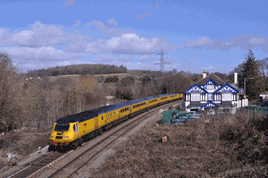This autumn is shaping up to be one of reviews. Network Rail Chairman Sir Peter Hendy has examined the company, and so is Non-Executive Director Dame Colette Bowe. But the most far-reaching of all seems set to be that conducted by High Speed 1 Chief Executive Nicola Shaw - with responses to a series of fundamental questions being sought ahead of the final publication of her report next year.
The Shaw Report is arguably more important than the others because it seeks to identify how Network Rail should change to better meet the demands of its passenger and freight train operating customers - and how it should be funded in the future. The scoping document - in very simple terms a list of questions about NR and the best way forward - was released on November 12. Responses must be submitted by December 24.
It goes into considerable depth on the structure of the railway and its importance to the country. This may seem rather a statement of the obvious to close observers of the industry, but this exposition of the current situation is vital to ensure that anyone who wishes to respond has as complete a picture of Network Rail and Britain’s railways as possible.
Perhaps the most important point the report makes is that Britain’s railways are growing. As Shaw points out, since the mid-1990s growth in rail travel has exceeded all other transport modes, with the number of passenger journeys rising by 57% in the last decade alone. There have also been major increases in freight traffic.
This growth has been backed by a continuous improvement in safety, following the October 2000 derailment at Hatfield that ultimately led to the demise of NR’s predecessor Railtrack. Britain’s railway is, by most measures, the safest in Europe.
And the railway is improving, too - a 2013 study by the European Commission rated Britain’s railways as the most improved in Europe since the 1990s. Given the issues being examined by the various reviews, this is a vital point to make: Britain’s railway may not be perfect and changes are needed, but broadly speaking, it is delivering what it sets out to.
Shaw’s view of opportunities and challenges is that network capacity is becoming an increasingly pressing issue. Catering for expected growth is, in Shaw’s words, “a significant challenge”.
Easing these capacity issues will not be easy, but Shaw recognises the potential of widespread use of European Rail Traffic Management System (ERTMS) signalling. A well-planned European Train Control System (ETCS, the signalling aspect of ERTMS) Level 2 installation can boost capacity by around 20%, while installing the moving block Level 3 variant could increase that figure further.
High Speed 2 will have a significant effect, by releasing capacity on the conventional network and providing new and more attractive services. The expectation is that HS2 Ltd will become the infrastructure manager for the route when it opens. There will be major challenges in ensuring operational and planning interfaces between HS2 and NR work effectively.
The role of government is also vital - it owns and funds NR, and provides subsidy for some train operating companies. Shaw makes it clear that governmental involvement is the norm in Europe, to protect unprofitable but socially necessary services and to protect customers’ interests through intervention and regulation. Wider economic benefits claimed by government involvement in railways include regulated fares, reduced congestion on the roads, providing a way for people to get to work, and linking businesses.














Login to comment
Comments
No comments have been made yet.